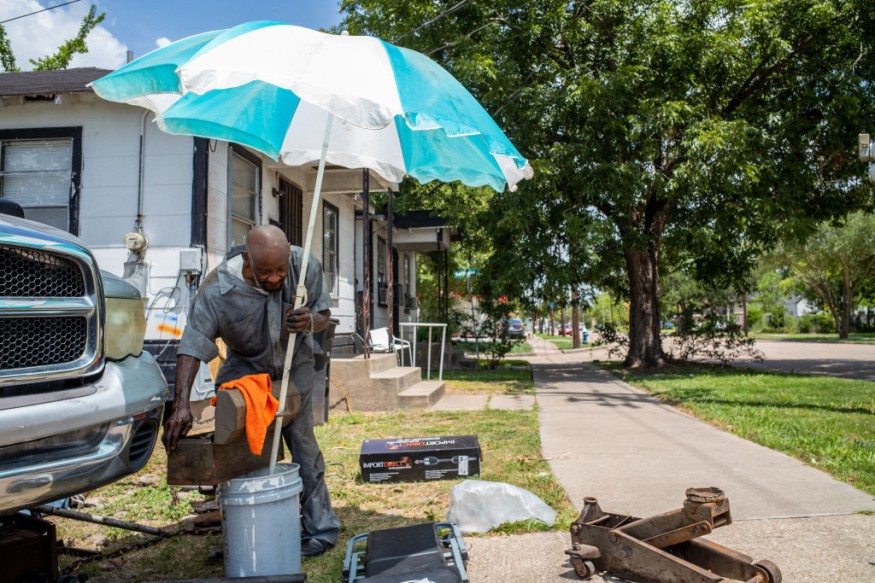
While the Plains and Mississippi will continue to experience frequent episodes of hazardous storms and flooding, Texas remains beneath the unyielding heart dome.
Heat Dome and Severe Weather
This week, rounds of storms will frequently pound areas farther north over the Plains and Mississippi Valley as a heat dome continues over the south-central United States. The stormy weather pattern poses risks such as severe storms and flash flooding, according to AccuWeather meteorologists.
The Central States will effectively be divided into two regions, with one region continuing dry and hot and the other region being somewhat cooler but occasionally stormy.
Texas: Highest Temperatures of Summer
This week, Texas will continue to swelter under the same dome of high pressure that has dominated much of this summer, according to the National Weather Service - Weather Prediction Center.
This week, Houston will see some of the hottest temperatures of the summer, with many days expected to reach or surpass 100 degrees. With highs reaching 101 to 104 degrees predicted, Wednesday through Friday will likely be the warmest days of the week. This week, as temperatures soar into the triple digits, Dallas, San Antonio, and several other Texas cities, in addition to a large portion of western Louisiana and Oklahoma, may register the highest temperature values of the summer.
For the majority of this week, temperatures will be 5 to 10 degrees above the low to mid-90s historical average.
Meanwhile, Phoenix broke its previous record of 18 days by recording its 31st straight day with a high temperature exceeding 110 degrees, Forbes reports.
Plains and Mississippi: Severe Weather with Storms, Flood
Areas to the east and north of the heat dome may get a lot of downpours and thunderstorms this week.
Throughout this week, waves of energy will travel around the perimeter of the heat dome, according to Courtney Travis, an AccuWeather Senior Meteorologist.
Thunderstorm complexes will form and spread widely across the central Plains. Fronts bringing chilly air from Canada will probably cause severe thunderstorms in the northern Plains along with the Great Lakes region. Through Tuesday night, areas in the northern along with central High Plains should expect localized severe weather.
From eastern Wyoming stretching to northeastern Colorado, Nebraska, all the way to northeastern Kansas, as well as southwestern Iowa, and Missouri, there will be a risk of severe thunderstorms. Large hail, damaging wind gusts, and flash flooding are all potential dangers.
From southern Manitoba, North Dakota, South Dakota, central and northern Minnesota, northeastern Montana, and farther north, severe thunderstorms are expected. Similar hazards from extreme weather are forecast for the central Plains.
Thunderstorms will move southeastward in the middle of the week near the US-Canada border. On Wednesday, severe weather will hit regions in northern Michigan, northern Wisconsin, and central Minnesota, as well as northwest Ontario. From Denver through south-central Nebraska and central Kansas, the central Plains will continue to be active due to locally severe storms.
Also possible are flash floods and soaking thunderstorms centered around the Tetons in western Wyoming, including Yellowstone National Park, as a result of the moisture and thunderstorms from the Southwest.
Flood From the Storm During a Drought
Extreme and exceptional drought still exists in parts of Nebraska, Kansas, Missouri, and Wisconsin, among other states, despite abundant rainfall in some regions of the central Plains and Midwest. The neediest places are anticipated to benefit from rounds of rain, which will also help crops as they mature. Flash flooding, however, can occur when summer thunderstorms and downpours produce too much rain, particularly in areas where storms are frequent.
Urban locations like St. Louis may experience flooding as a result of isolated downpours. From northern Colorado through portions of Nebraska, Missouri, and southern Illinois, as well as perhaps the lower Ohio and Tennessee valleys, several inches of rain is predicted. By the weekend or the start of the following week, thunderstorms may move southward into Oklahoma, northeastern Texas, and Louisiana, AccuWeather reports.
Related Article : Violent Storms Strike Millions of Americans Across East Coast, Ending First Heatwave of the Season
© 2025 NatureWorldNews.com All rights reserved. Do not reproduce without permission.





